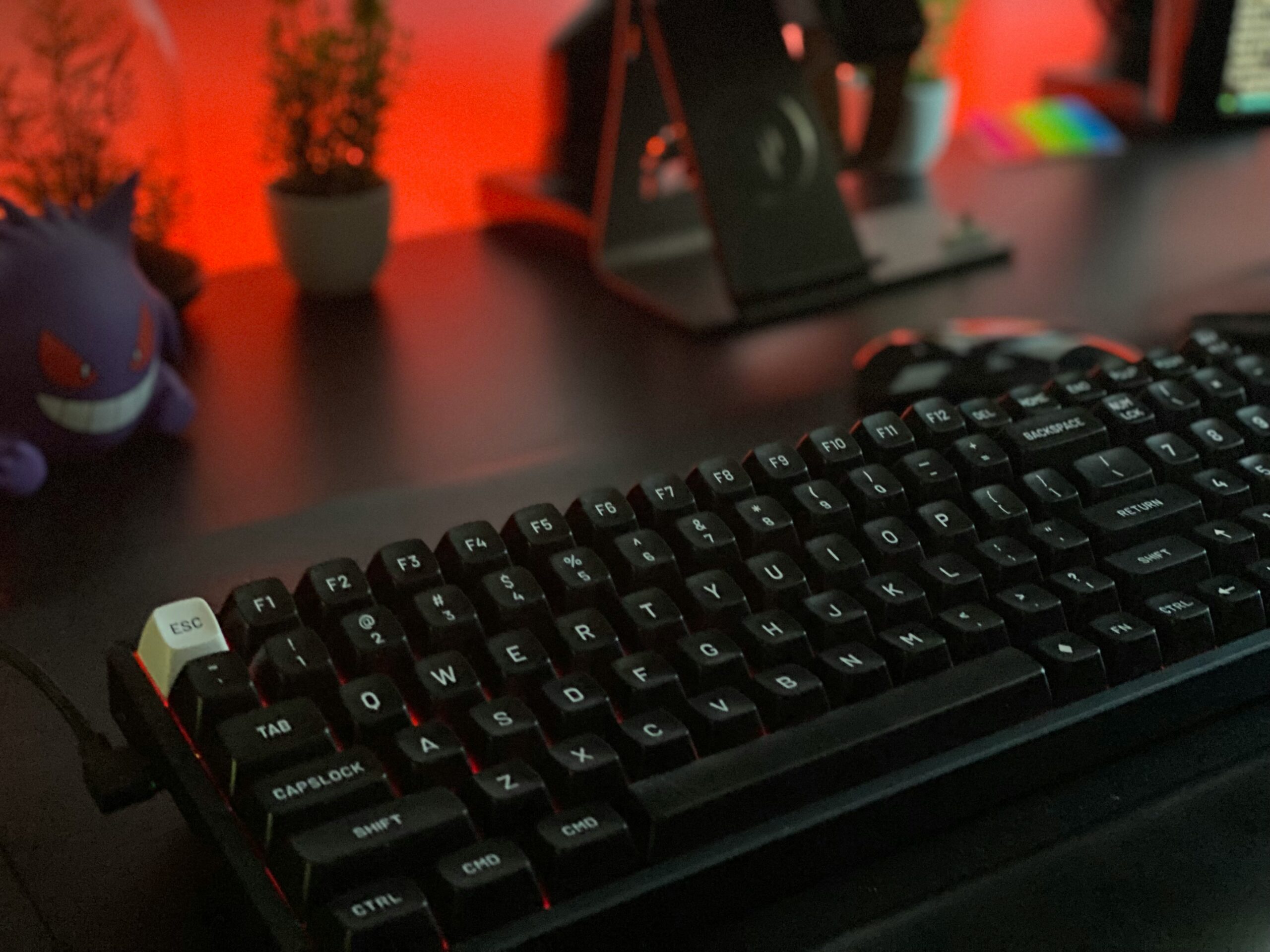Introduction to Accessible Home Technology
Accessible home technology refers to a wide range of tools and devices designed to enhance the usability of a home environment for individuals with disabilities. The primary goal of these technologies is to ensure that every individual, regardless of their physical abilities, can engage with their living spaces comfortably and independently. Accessible home technology embodies the principle that advancements in technology should cater to the diverse needs of all users, promoting inclusivity and enhancing quality of life.
In today’s world, the integration of accessible features into home technology is increasingly imperative. As our society evolves, the demand for products that support those with various disabilities continues to grow. Examples of accessible home technology include smart home devices, voice-activated assistants, adaptive appliances, and personalized communication systems. These tools not only help in daily tasks but also facilitate greater autonomy for individuals living with disabilities.
Moreover, accessible home technology provides significant benefits to both individuals and their families. By implementing these innovations, homes can become safer and more adaptable, reducing the barriers that many face. For instance, smart lighting systems can be controlled through voice commands, which is particularly helpful for individuals with mobility issues. Similarly, automatic door openers can enhance accessibility for those using wheelchairs or walkers. These examples underscore the importance of designing technology that is intuitive and easy to use, ensuring that everyone can benefit from the advancements made in this field.
The introduction of comprehensive accessibility measures in home technology is vital to fostering an inclusive environment. As the range of accessible devices continues to expand, it is essential for consumers and producers alike to prioritize adaptive solutions that enhance living conditions for all individuals. By embracing accessible home technology, we take significant steps toward building a future where everyone can thrive in their own spaces.
Understanding Different Types of Disabilities
In our pursuit of an inclusive future, acknowledging the diverse range of disabilities is essential to understanding how accessible home technology can greatly enhance the lives of individuals. Disabilities can generally be categorized into several primary groups, including mobility impairments, visual and hearing impairments, cognitive disabilities, and neurodiversity. Each of these categories presents unique challenges that technology can help to address.
Mobility impairments may include conditions that restrict an individual’s ability to move freely. Individuals facing these challenges often require assistive devices such as wheelchair ramps, adjustable-height furniture, or smart home technology controlled via voice commands. Such innovations enable individuals to navigate their environments with greater ease, promoting independence and a sense of autonomy.
Visual impairments range from partial sight to complete blindness, which necessitates the use of specialized tools like screen readers or Braille displays. Accessible home technology tailored for this demographic, such as smart speakers equipped with auditory feedback, can significantly improve daily activities and promote a safer living environment.
Hearing impairments encompass a spectrum from mild hearing loss to profound deafness. Individuals in this category benefit from accessible home technology that includes visual alerts for doorbells or alarm systems, as well as devices that provide real-time captioning during conversations or media consumption. Such advancements cater to their communication needs and enhance overall safety.
Cognitive disabilities cover a wide array of conditions affecting memory, problem-solving, and attention. Accessible technology designed for this group, such as task management apps or reminder tools, can significantly aid in daily organization and foster independence. Lastly, neurodiversity includes a variety of conditions like autism and ADHD, where technology can play a pivotal role in creating structured environments that accommodate unique processing styles.
By better understanding these different categories of disabilities, we can work towards integrating accessible home technology that addresses the specific needs of each group, improving inclusivity and quality of life for all individuals.
Essential Features of Accessible Home Technology
Accessible home technology is pivotal in fostering an inclusive environment for all individuals, especially those with disabilities or limited mobility. One of the fundamental features is voice control, which allows users to interact with their devices using simple vocal commands. This hands-free method significantly benefits individuals who may struggle with traditional input methods, enhancing their autonomy and ability to manage their living spaces.
Automated systems also play a crucial role in accessible home technology. These systems can control various home functions such as lighting, heating, and security, often through programmed routines. By integrating automation, users can create adaptive environments that respond to their specific needs and preferences, thereby enhancing comfort and safety.
User-friendly interfaces are another essential aspect of accessible home technology. These interfaces offer intuitive navigation, ensuring that individuals of varying technological expertise can operate devices with ease. Simplified menus, large buttons, and clear visuals are elements that contribute to better usability. The emphasis on user-centric design promotes accessibility, allowing individuals to control their environments effectively.
Compatibility with assistive devices is critical in the development of accessible home technology. These technologies should seamlessly integrate with tools that facilitate daily living, such as screen readers, alternative input devices, or mobility aids. This compatibility ensures that users can utilize the full range of features without barriers, promoting independence and efficient usage.
Lastly, customization options allow users to tailor technology to meet their unique preferences and requirements. Offering personal settings for sound, display, or device responsiveness ensures individuals can optimize their home technology experience. In conclusion, the combination of these features represents a substantial advancement toward creating inclusive living spaces where every individual can thrive.
Smart Home Devices and Accessibility
The advent of smart home devices has significantly transformed how individuals with disabilities interact with their living environments. Accessible home technology, through innovations in smart speakers, lighting systems, door locks, and thermostats, has made routine tasks more manageable and has improved overall quality of life for many users. These devices offer a range of functionalities that can be tailored to meet diverse needs.
Smart speakers, for instance, serve as a central hub for controlling various home technologies. With integrated voice assistants, individuals can issue commands to control lights, adjust thermostats, or operate appliances without the need for physical interaction. This hands-free approach is particularly beneficial for individuals with mobility challenges, allowing them to live independently and manage their homes more easily.
Lighting systems equipped with smart technology can be programmed to adjust automatically based on the time of day or can be controlled via voice commands. This feature not only enhances convenience for all users but is crucial for those with visual impairments. For instance, the ability to turn on specific lights at predetermined times can prevent accidents and improve safety within the home.
Additionally, smart door locks allow for greater control and security. They can be operated remotely via smartphones or through voice commands, ensuring that individuals can secure their homes without needing traditional keys. This technology is particularly advantageous for individuals with dexterity issues, ensuring that they can enter and exit their homes with ease.
Thermostats equipped with smart technology not only allow for effortless temperature adjustments but can also learn the user’s preferences over time. This feature helps maintain a comfortable living environment, ensuring that individuals can focus on other aspects of their daily lives without worrying about climate control.
Assistive Technologies: Ensuring Every Voice is Heard
In the realm of accessible home technology, assistive technologies play a crucial role in fostering communication and interaction for individuals with varied needs. These tools not only enhance the quality of life for users but also empower them to engage actively with their environment and loved ones. One prominent category of assistive technology is text-to-speech software, which converts written text into spoken words. This technology is especially beneficial for individuals with speech impairments or reading difficulties, allowing them to communicate more effectively and independently. By simply entering text into a device, users can produce audible speech, facilitating clearer interaction during conversations.
Furthermore, communication boards serve as another vital form of assistive technology, providing visual symbols or pictures that users can point to for conveying their thoughts and needs. These boards are customizable and can be tailored to the individual’s preferences, making communication more personal and effective. They are particularly beneficial for users with limited verbal skills, enhancing their ability to express emotions, request assistance, or engage socially. The integration of accessible home technology, such as communication boards, can create a supportive environment where every voice is acknowledged and valued.
Alternative input devices also illustrate the diverse landscape of assistive technologies available to promote interaction at home. Tools such as adaptive keyboards, voice recognition systems, and eye-tracking devices enable users with physical disabilities to operate computers and smart home devices with ease. These technologies eliminate barriers, allowing users to navigate their digital worlds or control their home environments seamlessly. Overall, the implementation of accessible home technology through various assistive devices underscores a commitment to inclusivity, ensuring that every individual has the opportunity to participate fully in their home life and express themselves without limitations.
Case Studies: Real-Life Applications of Accessible Home Technology
Accessible home technology has transformed the lives of countless individuals with different disabilities, making day-to-day activities more manageable and empowering them with a sense of autonomy. One notable example is John, a veteran who became paralyzed due to an injury. After incorporating smart home features like voice-activated lighting, automated door locks, and window blinds, John can now control his living environment without physical assistance. This independence not only enhances his quality of life but also fosters a greater sense of security in his home.
Similarly, Emily, a young woman with a visual impairment, has benefited immensely from accessible home technology. She utilizes smart speakers with integrated screen reader capabilities, allowing her to receive verbal updates on her schedule, control music playback, and operate household devices. Furthermore, she employs navigational tools and accessories that provide auditory feedback, enhancing her mobility within her home and promoting greater independence. This adaptation to home technology has significantly reduced barriers and opened doors for her participation in various activities.
Another compelling case involves a family with a child on the autism spectrum. They implemented accessible home technology systems that feature visual schedules, interactive apps, and social stories. These tools help the child better understand daily routines and transitions, easing anxiety and enhancing behavioral responses. With these technologies in place, the child is more engaged and confident in participating in family activities, reinforcing their ability to connect with others and thrive within their environment.
These real-life applications illustrate the profound impact of accessible home technology on individuals with diverse disabilities. By fostering independence and enhancing participation in daily life, such technologies play a critical role in enabling individuals to navigate their surroundings with confidence and ease. As advancements in technology continue, the potential for further inclusivity grows, paving the way for a more equitable future.
Challenges in Implementing Accessible Home Technology
The adoption of accessible home technology has the potential to significantly improve the quality of life for individuals with disabilities or age-related challenges. However, several barriers hinder its widespread implementation. One of the most prominent challenges is cost. Many accessible technologies, which often include advanced features tailored to specific needs, can come with a hefty price tag. This financial burden can be a major deterrent, particularly for low-income households or those on fixed incomes. Additionally, funding for such technologies is often limited, creating disparities in access among different demographic groups.
Another significant barrier to the adoption of accessible home technology is the lack of awareness. Many individuals, including potential users and caregivers, are simply unaware of the existing solutions available to them. There exists a wide variety of products, from simple adaptive tools to complex automated systems, yet many potential users remain uninformed about these options. This knowledge gap can lead to missed opportunities where accessible home technology could enhance daily living experiences.
Furthermore, insufficient training for both users and caregivers can impede the successful implementation of accessible technologies. Without proper guidance on how to effectively utilize these technologies, users may struggle to derive maximum benefit from them. Caregivers, who often play a crucial role in supporting individuals with disabilities, also require adequate training to understand how to assist with the operation of these technologies efficiently. Addressing these training needs is paramount for ensuring that accessible home technologies can be integrated seamlessly into everyday routines.
To overcome these challenges, concerted efforts from manufacturers, healthcare providers, and advocacy groups are necessary. This could involve increasing financial assistance programs, raising awareness about available technologies, and providing comprehensive training for users and caregivers alike. By tackling these barriers head-on, the implementation of accessible home technology can progress toward a more inclusive future.
Future Trends in Accessible Home Technology
As we look to the future, the landscape of accessible home technology is evolving rapidly, driven by advancements in various technological fields. One of the most significant trends is the integration of artificial intelligence (AI) into home automation systems. AI systems can learn user preferences over time, adapting to individual needs and thereby creating a more personalized living environment. For instance, AI-driven voice assistants can control smart home devices, adjusting lighting, heating, and security settings based on the unique requirements of residents, making homes more accommodating for individuals with disabilities.
Another vital development is the implementation of machine learning applications in accessible technology. By analyzing data from user interactions, these systems can improve their functionality and responsiveness, providing seamless experiences for users. For example, machine learning algorithms can enhance speech recognition capabilities, enabling users with speech impairments to interact effectively with their devices. This growth in smart technology is paving the way for homes that can interpret and respond to commands with increasing sophistication, ultimately promoting independence for individuals with various disabilities.
The rise of Internet of Things (IoT) devices also plays a crucial role in creating accessible home environments. IoT technology connects various devices, allowing them to communicate and work together intelligently. This connectivity enables smart devices—such as lights, appliances, and locks—to be controlled remotely through smartphones or voice-activated systems. Such integration not only streamlines daily tasks but also significantly enhances safety and accessibility. For example, a smart home system could alert caregivers in real-time if a resident requires assistance, thereby maintaining a supportive environment.
In conclusion, the future of accessible home technology is poised for remarkable advancements. With ongoing innovations in artificial intelligence, machine learning, and IoT devices, we can expect a transformative impact on the accessibility of homes. This evolution not only promises to enhance the quality of life for individuals with disabilities but also fosters a more inclusive society.
Conclusion: The Path Forward for Accessible Living
In today’s rapidly evolving technological landscape, the importance of accessible home technology cannot be overstated. As we have explored, such innovations provide crucial support for individuals with varying needs, including those with disabilities and the elderly. These technologies not only enhance the quality of life for users but also foster an environment where everyone can thrive. The integration of accessible technology into our homes is not merely a luxury; it is a necessity for achieving inclusivity.
Throughout this blog post, we have emphasized the significance of creating living spaces that cater to all individuals. By embracing home automation, intelligent voice assistants, and adaptive devices, we can transform everyday tasks into manageable activities for everyone. This shift towards inclusivity requires a collaborative effort from various stakeholders, including technology developers, policymakers, and community leaders. By advocating for and raising awareness about accessible home technology, we can pave the way for future innovations that prioritize the needs of all individuals.
Moreover, it is essential for communities to come together to share resources, knowledge, and best practices surrounding accessible living. Collaboration will not only strengthen the development of these technologies but also ensure that they reach those who need them the most. As we move forward, it is vital that we continue to foster dialogues about accessibility and inclusivity within our homes—embracing a culture that welcomes diverse perspectives and needs.
In conclusion, the journey towards making accessible home technology a standard component of our living environment will require concerted efforts from all sectors of society. Together, we can champion the cause of accessibility, advocating for a future where everyone enjoys the benefits and opportunities that come from a fully inclusive home. The path forward is clear, and it begins with our commitment to redefining what it means to create a truly accessible living space.



